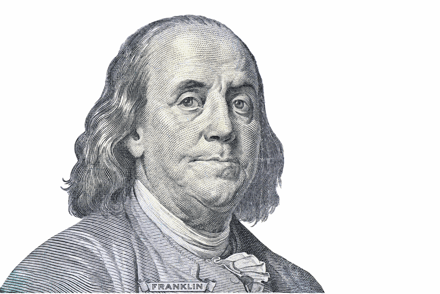 More often than not, manufacturers have capital tied up in inventory that could otherwise be invested in growth. This is typically due to less-than-optimal production systems rather than over-purchasing, so most of the bloat resides in work-in-process (WIP). The good news is that manufacturers can free substantial amounts of cash by adopting lean manufacturing. Reduce your $5M of WIP by 20% and you just freed $1 million to build your business.
More often than not, manufacturers have capital tied up in inventory that could otherwise be invested in growth. This is typically due to less-than-optimal production systems rather than over-purchasing, so most of the bloat resides in work-in-process (WIP). The good news is that manufacturers can free substantial amounts of cash by adopting lean manufacturing. Reduce your $5M of WIP by 20% and you just freed $1 million to build your business.
Actions and reactions in manufacturing systems can be described by mathematical laws, much like the laws of physics describe relationships in natural phenomena. The most famous "law" of lean manufacturing is
Little's Law:
WIP = Throughput x Cycle Time
where Throughput is the number of parts produced per unit of time and Cycle Time is the total time required for production.
This is intuitive when we consider that less inventory (WIP) is required on the floor if the total time required to manufacture a product (Cycle Time) is decreased. Stated another way: if the production system is made to be more efficient, the amount of capital invested in inventory will decrease. Lean manufacturing principles address this with prescribed ways for continually improving efficiency, thereby reducting Cycle Time. We wrote about this in our last post Inventory Control, Farewell Frustration.
Throughput is a bit more complicated to reduce because it is affected by the theory of constraints, which states that the rate of a whole process is affected by any bottleneck within that process. Again, intuitively obvious but a bit harder to manage because once one bottleneck is eliminated another often appears down the chain. This requires a continuous, looping review process of:
- Identify the process’ constraints
- Decide how best to exploit the process constraints
- Subordinate everything else to the above decisions
- Evaluate the process constraint
- Remove the constraint and re-evaluate the process
Two very good books on the subject are Lean Production Simplified (Pascal Dennis) and The Goal (Eliyahu Goldratt). Lean Production Simplified provides a step-by-step process of applying lean manufacturing principles based on the author's experience working at Toyota (where the concept was developed). The Goal focuses on the theory of constraints. Written in the form of a novel, it is a very easy read.
Very often precast productivity is limited simply by a lack of information about the manufacturing process at any given point in time. This is where product tracking systems can help. We originally developed Idencia to provide product tracking for concrete and have recently expanded its capability to provide steel tracking solutions as well. You can read more about how the system works for both in Idencia v1.3: Better Product Tracking for Concrete and Steel
We at Idencia are all about offering solutions to improve productivity in the infrastructure value chain. As such, we are proponents of lean manufacturing practices. If you are a manufacturer, construction conctractor or infrastructure project owner and would like to learn more about lean principles. To start, check out our report on lean manufacturing for the precast industry: 17 Ways Lean Manufacturing Increases Profits and Win Bids.
About Idencia
Our purpose at Idencia is to offer precast RFID tracking solutions that improve productivity throughout the value chain. Our subscription offering applies to products from the time of manufacture through end-of-life. As a cloud-hosted product tracking system that is seamless between manufacturers, contractors and asset managers, Idencia adds information value to all, eliminates redundancy and saves time. If you would like to learn more, click below.

Apr 21, 2015 9:00:00 AM




Comments